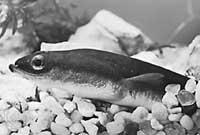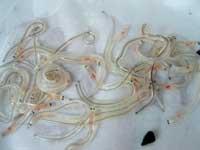The eel: above all obstacles
2009/03/01 Álvarez Busca, Lucía - Elhuyar Zientziaren Komunikazioa Iturria: Elhuyar aldizkaria
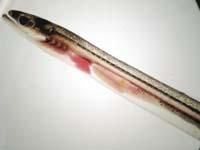
Scientists began to realize the troubling situation about ten years ago. In fact, the decline in populations was not only occurring in certain areas or basins, but throughout Europe and North Africa. Following the research, ICES/CIEM concluded that the European eel was outside the biological limits of sustainability (International Council for the Exploration of the Sea).
After many research work, a regulation was approved in 2007 to address this situation. The main objective of this regulation is the recovery of eel populations. To do this, 40% of the born eel is sought to return to the sea. This is known as a leak percentage. This goal poses many challenges to scientists. And it is difficult to control this data, and it is not clear in an ineffective situation the percentage that manages to return to the sea.
To ensure the mouth of Aingi, the regulation seeks to limit man-made deaths. To do this, it imposes on the countries that make up the ICES the obligation to develop management plans. Management plans include measures such as limiting commercial and recreational fishing, repopulation, improving habitat and river connectivity, studying the impact of natural predators and developing species aquaculture.
Development of the ACBC Plan
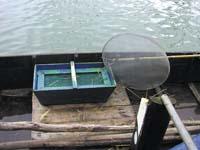
Two years ago the Eel Management Plan began to be developed in the ACBC. The Working Group for the development of the Community Plan brings together all the entities involved in the management of eel, both administrations and scientific and technical agents: Basque Government, Diputación Foral de Gipuzkoa, Diputación Foral de Bizkaia, AZTI-Tecnalia, Ekolur Asesores Ambiental and UPV/EHU. They have collaborated with the Provincial Council of Alava, the School of Aquaculture of Mutriku and the fishing sector.
This management plan presents a series of concrete measures for its implementation in the case of the ACBC. Among them is fishing management. Several points are mentioned in this section. First, anglers are asked to strictly comply with the conditions for renewing the fishing license. They will give the administration a notebook with the data of the catches. Thus, both administration and researchers receive first-hand information. In addition, in this way, fishermen participate in the development of the plan and faenan with greater responsibility. In addition to enforcing the notebook, they are asked to deliver this data within deadlines--so far many delivered it out of time, which conditions data for research.
The quota of catches of the angle depends on the management of the fish--hardly there are eels in the CAPV. Thus, a limit of 2 kilograms per fisherman and day is established, both in fisheries conducted from land and from boats.
In addition a reduction of the fishing season is established. Until now it was extended from October to March, but the management plan limits it from November 15 to January 31. In addition to the temporary limitation, fisheries have been delimited, declaring as permanent reserves three main rivers --Oiartzun, Urumea and Barbadun - and two secondary rivers --Inurritza and Andrakas Basin. To finalize the management of the fishing is requested the exclusion of the list of species that can be fished in the rivers of eel.
The second measure is to develop repopulation experiences in two basins --Oria and Barbadun - and to study the possibility of developing eel aquaculture.
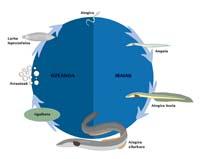
Habitat improvement
Another measure is the improvement of eel habitat. Thus, the adaptation of various artificial structures existing in the rivers is expected, both in those that have been built so far and in those that will be executed from now on. In this sense, the temporary disconnection of hydroelectric turbines is proposed. In fact, a high percentage of the eels entering the turbines die. This measure aims to investigate the issue in 3-4 years to see how evolution is. All this with the aim of creating rivers that allow the circulation of eels. In addition, the sanitation and purification of rivers is considered a priority.
As a last measure, control of the predators of the eel is established. Current studies do not show the incidence of these animals in eel populations. Therefore, the identification, evaluation and quantification of these predators is proposed for 3 years.
Presentation and approval of the Plan
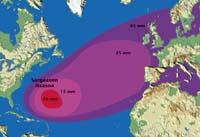
The Basque plan was presented in December last year and the Spanish plan is now being developed. Spain will have to join its regional plans and develop its national plan this year. At its completion, the Scientific, Technical and Economic Committee for Fisheries of the European Union will carry out the scientific and technical evaluation of the National Plan. Approved plans will begin to apply on 1 July 2009, and non-approved plans will have three months to submit amendments.
Within three years, in 2012, each country will have to submit the plan development data. Among these data will be indicated the proportion of biomass that reaches the exit to the sea, the fishing effort and the reduction, and the amount of eel greater than 12 centimeters. Thus, with data from all countries, a statistical and scientific evaluation will be carried out in December 2013 of the results of the implementation of management plans.
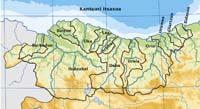

Gai honi buruzko eduki gehiago
Elhuyarrek garatutako teknologia




